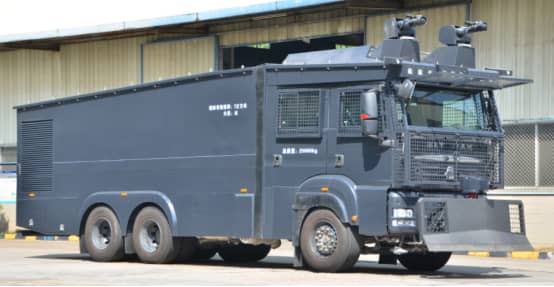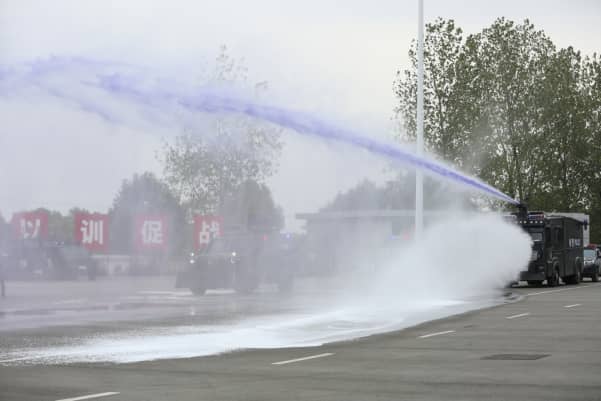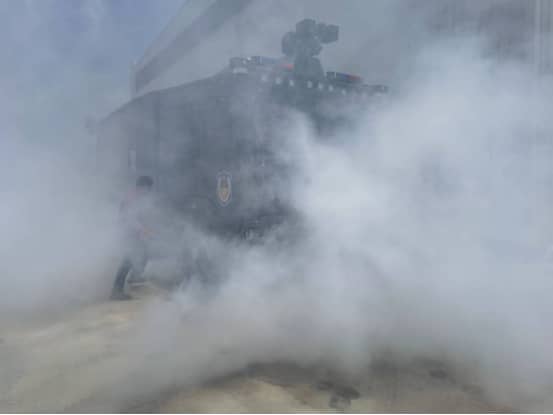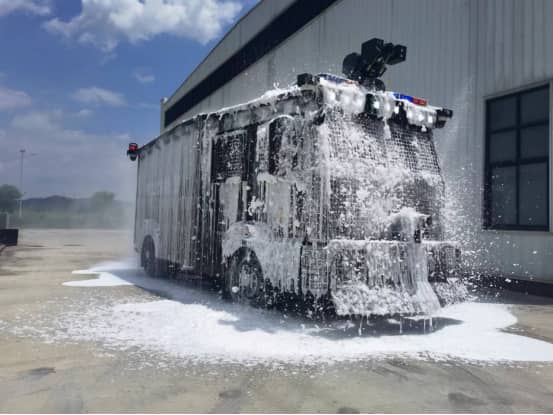Hello everyone. Water cannon vehicles, as remarkable specialized vehicles, play diverse roles in many aspects.
CHINA XINXING GUANGZHOU IMP&EXP will explore them together. Water cannon vehicles are specialized vehicles equipped with high-pressure water cannons, designed to achieve diverse functions through powerful water jets. Their core principle involves using high-pressure pumps to pressurize water to 10-15 Bar, forming high-speed water columns through specialized nozzles. These vehicles can reach ranges of 40-80 meters, with some models exceeding 120 meters.
1. Core Applications and Technical Features
1. Riot Control and Crowd Management
Water cannon vehicles are widely used in public security. Law enforcement agencies deploy riot-control water cannons with dual water cannons, capable of spraying 1,200 liters of high-pressure water per minute at a range of 65 meters. These vehicles integrate tear gas or dye mixing systems to disperse crowds and track targets effectivel. Some models use laser rangefinders and multi-angle cameras for precise control, repelling targets at 20 meters while recording evidenc.
2. Firefighting and Disaster Response
Firefighting water cannons feature large-caliber nozzles with ranges exceeding 80 meters, enabling rapid suppression of high-rise fires. Multi-functional aerial platform fire trucks combine a 62-meter boom with a high-pressure water supply system to directly inject water into high-rise buildings. Some models also support foam or dry powder spraying for oil or chemical fires.
2. Military and Paramilitary Scenarios
1. Non-Lethal Tactical Support
Water cannons serve as non-lethal weapons in military operations. Their high-pressure streams suppress riotous behavior without causing fatal injuries, aligning with humanitarian principles. For example, dye-marking systems assist in identifying targets during public security incidents.
2. Battlefield Support Functions
In military bases or frontlines, water cannons extinguish explosion-induced fires and protect critical facilities. Some models feature self-protection systems that spray water mist on roofs and chassis to extinguish flames and dilute hazardous chemicals. They also support chemical spraying to disperse smoke or neutralize toxins.
3. Future Technological Trends
1. Intelligence and Automation
Next-gen water cannons integrate AI systems. Swing mechanisms and lifting systems achieve 360-degree rotation and height adjustment via motors, enhancing flexibility. Onboard cameras and laser rangefinders auto-identify targets, optimizing spraying strategies with cloud data.
2. Environmental Sustainability
Eco-friendly technologies are a priority. Mist cannons adopt recyclable water sources and low-energy designs, with some models supporting solar power. Future developments may promote biodegradable additives to reduce environmental impact.
Conclusion
Water cannon vehicles, as technology-tactics hybrids, expand their roles from urban riot control to battlefield support, environmental governance, and emergency response. With advancements, they will play a pivotal role in future public security and military operations, balancing effectiveness with ethics for responsible use.




